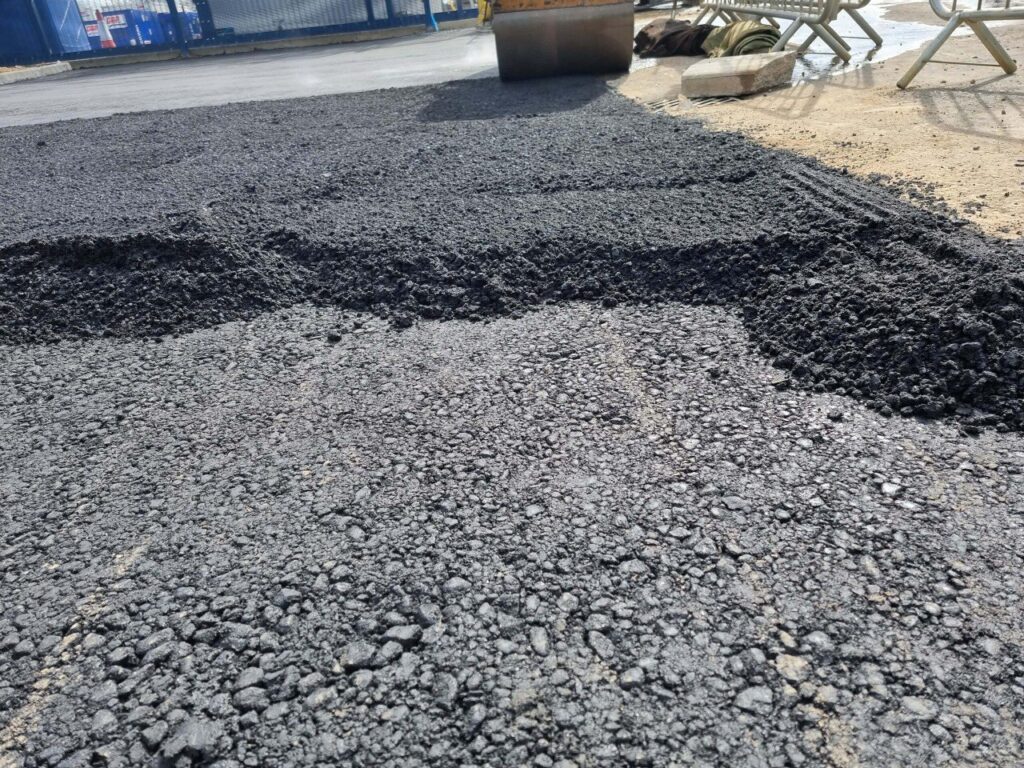Tarmac in Extreme Environments: Road Construction Challenges in Desert and Arctic Regions
Introduction: Tarmac, or asphalt, is a versatile and widely used construction material for roadways worldwide. However, constructing tarmac roads in extreme environments, such as deserts and Arctic regions, presents unique challenges. This blog post will explore the complexities and innovative solutions involved in tarmac road construction in these harsh climates.
Tarmac Challenges in Desert Regions
1. Extreme Heat
Desert regions are known for scorching temperatures exceeding 120°F (49°C). Extreme heat poses several challenges for tarmac road construction:
Tarmac Softening: High temperatures can soften tarmac, making it susceptible to rutting and deformation. To mitigate this, specialised tarmac mixes with modified binders and polymer additives are used to improve heat resistance.
Quick Work: Construction crews often work during cooler hours, such as early mornings and evenings, to minimise exposure to extreme heat.
2. Sand and Dust
Desert environments are prone to sandstorms and blowing dust, damaging road surfaces and reducing visibility. To address this:
Roadside Vegetation: Planting vegetation alongside roads helps stabilise dunes and reduce the risk of sand drifts onto road surfaces.
Dust Control: Dust control measures, including dust suppressants and windbreaks, are employed to reduce the impact of blowing dust on roadways.
Tarmac Challenges in Arctic Regions
1. Extreme Cold
Arctic regions experience sub-zero temperatures and harsh winters, which can have adverse effects on tarmac roadways:
Cold Cracking: The extreme cold can cause tarmac to become brittle and prone to cracking. Using cold-mix asphalt and incorporating additives that improve flexibility can help prevent cold cracking.
Snow and Ice: Snow and ice accumulation require ongoing maintenance, including snowploughing and ice removal, to keep roads safe and accessible.
2. Thawing Permafrost
Thawing permafrost in Arctic regions can lead to unstable ground conditions beneath roadways:
Permafrost Monitoring: Engineers monitor permafrost conditions to identify potential issues. Techniques such as insulation layers and ground stabilisation are used to mitigate permafrost thaw.
Frost Heaving: Frost heaving, where the ground swells and pushes up the road surface, requires specialised design and construction techniques to prevent road damage.
Innovative Solutions
In both desert and Arctic regions, tarmac road construction requires innovative solutions to overcome these challenges:
Specialised Tarmac Mixes: Tarmac mixes are tailored to withstand extreme temperatures and provide better durability.
Proper Drainage: Effective drainage systems prevent water accumulation, which can lead to road damage in freezing and thawing conditions.
Insulation and Ground Stabilisation: Insulating layers and ground stabilisation methods protect against permafrost thaw and frost heaving.
Conclusion: Constructing tarmac roads in extreme environments is a complex undertaking that requires specialised knowledge, materials, and techniques. Despite the challenges, tarmac roadways play a crucial role in connecting communities in these regions, facilitating transportation, and supporting economic activities. At Canterbury Driveways & Surfacing, we are committed to providing high-quality tarmac road construction and maintenance services, even in the most challenging environments, to ensure the safety and connectivity of our communities.
Call us on: 01227 203 897
Click here to find out more about Canterbury Driveways & Surfacing
Click here to complete our contact form and see how we can help with your driveway needs.

